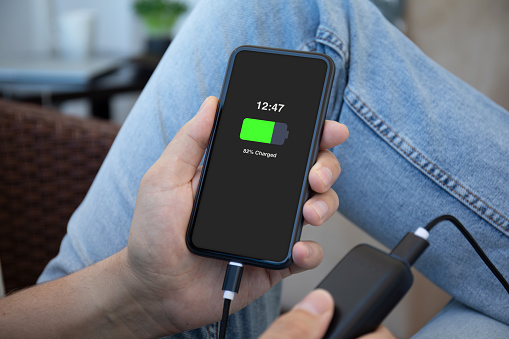How to Cross-Post on Social Media Platforms
In today's digital world, social media is an integral part of our lives. Whether you're a business owner, a content creator, or simply someone who loves to share your experiences, cross-posting on social media platforms can save you time and expand your reach. In this article, we'll explore the art of cross-posting and how to do it effectively.
Understanding Cross-Posting
Cross-posting is the practice of sharing the same content on multiple social media platforms. It allows you to reach a broader audience without creating unique content for each platform. But there's more to it than just copying and pasting.
Cross-posting on social media is more than just copying and pasting the same content. It's about sharing your message on multiple social media platforms while adapting it to fit each platform's unique audience and features.
Here's a simple breakdown:
- Adaptation: Each social media platform has a different audience and style. Cross-posting involves tailoring your message to fit these differences. For example, you might use hashtags on X but not on Facebook.
- Timing: You post at the best times for each platform when your audience is most active. This means your content is more likely to be seen.
- Engagement: You engage with your audience differently on each platform. You reply to comments and messages and participate in discussions specific to each platform.
- Visuals: You might use different images or videos that work better on certain platforms. For instance, Instagram is more visual, while Twitter is more text-based.
In essence, cross-posting is about taking one message and customizing it to fit the language, culture, and preferences of each social media platform to connect with your audience effectively.
The Benefits of Cross-Posting
Here are seven benefits of cross-posting on social media. I've explained them in a very simple way with some perfect examples:
- Wider Reach: Cross-posting helps you reach a larger and more diverse audience across various platforms. For instance, sharing a blog post on both Facebook and X broadens your reach.
- Time Efficiency: You save time by sharing one message on multiple platforms simultaneously. Posting your product launch on Facebook, Twitter, and Instagram all at once is efficient.
- Consistency: It ensures a consistent brand message and image across platforms. The way you describe your business on LinkedIn should match your description on Pinterest.
- Better Engagement: Different platforms have unique engagement features. For example, on Instagram, you can engage with your audience through Stories, while on Twitter, you can have real-time conversations.
- Improved SEO: Cross-posting can help improve your online visibility. Sharing your blog post on various platforms provides more backlinks and can boost your website's SEO.
- Diversified Content: You can adapt your content to suit each platform. For instance, using more visuals on Instagram and more text on LinkedIn to cater to audience preferences.
- Audience Preferences: It caters to different audience preferences. For example, some people prefer Instagram for lifestyle content, while others prefer X for news and updates. By cross-posting, you reach both groups.
Selecting the Right Content
Not all content is suitable for cross-posting. Find out what type of content works best and why quality should never be compromised.
Cross-posting works well for various types of content, but it's important to adapt and customize the content to fit the unique characteristics and preferences of each platform. Here are some content types that are suitable for cross-posting:
1. **Blog Posts:** Share excerpts or summaries of your blog posts on different platforms, linking back to your website. Adjust the captions or tweets to match each platform's style.
2. **Visual Content:** Images and graphics can be cross-posted, but you may want to resize or reformat them to fit the platform's requirements. For instance, a visually appealing infographic can be shared on both Instagram and Twitter.
3. **Videos:** Videos are versatile. You can post them on YouTube, share snippets on Instagram, and post links on other platforms, driving traffic to your video content.
4. **Promotions and Offers:** Share your promotions, discounts, and special offers. Tailor your approach – a visually enticing image on Instagram, a straightforward announcement on Twitter, and a detailed post on Facebook.
5. **Event Announcements:** Whether it's a webinar, workshop, or meetup, you can cross-post event announcements. Customize the messages and use different visual elements to match the platform's audience.
6. **Quotes and Inspirational Messages:** Inspirational content can be shared across multiple platforms, but consider the format – a visually appealing quote image on Instagram and a simple text post on Twitter.
7. **User-Generated Content:** If your customers or followers create content related to your brand, share it across your social media platforms. Encourage user engagement and showcase their content.
8. **News and Updates:** Company news, product launches, or industry updates can be shared across platforms with variations in the level of detail and style.
Remember that while cross-posting is effective, it's also essential to maintain the uniqueness of each platform. Tailor your content, captions, and engagement style to fit the expectations and preferences of your audience on each platform.
Choosing the Platforms
Not all social media platforms are created equal. We'll guide you through the process of selecting the right platforms for your cross-posting strategy.
Selecting the right platforms for your cross-posting strategy is crucial for maximizing your reach and engagement. Here's a step-by-step guide to help you make the right choices:
1. **Know Your Audience:**
- Understand your target audience's preferences, behaviors, and demographics. Which social media platforms are they most active on? This is your starting point.
2. **Set Clear Goals:**
- Define your goals for cross-posting. Are you aiming to increase brand awareness, drive website traffic, or boost sales? Your objectives will guide your platform selection.
3. **Evaluate Platform Features:**
- Each social media platform offers unique features and caters to specific content types. For instance, Instagram is image-centric, while LinkedIn is geared towards professional networking. Consider which features align with your content.
4. **Analyze Competition:**
- Research your competitors. Where are they active, and how successful are their cross-posting efforts? Analyzing your competitors can provide insights into platform effectiveness.
5. **Resources and Time:**
- Assess your available resources, including time and content creation capabilities. Different platforms may require varying levels of effort and maintenance.
6. **Content Relevance:**
- Determine if your content is suitable for the platforms you're considering. For example, if your content is highly visual, Instagram and Pinterest may be ideal choices.
7. **Frequency and Consistency:**
- Consider how frequently you can post and how consistent you can be on each platform. Some platforms may require more frequent updates than others to maintain engagement.
8. **Platform Demographics:**
- Review the demographics of each platform. For instance, Facebook has a diverse user base, while TikTok attracts a younger audience. Choose platforms that align with your target demographics.
9. **Testing and Analytics:**
- Be prepared to experiment. Start with a few platforms and use analytics to track the performance of your cross-posted content. Adjust your strategy based on what works best.
10. **Scale Gradually:**
- If you're new to cross-posting, start with a manageable number of platforms. As you gain experience and resources, you can expand your strategy.
11. **Monitor Trends:**
- Stay up to date with social media trends and emerging platforms. What's popular today may change tomorrow, so be ready to adapt.
12. **Consistency is Key:**
- Ensure a consistent brand message and image across all selected platforms to maintain brand identity.
Remember that the right platform mix can evolve over time as your audience and goals change. Regularly assess your cross-posting strategy to ensure it aligns with your objectives and audience preferences.
Manual Cross-Posting
The traditional way of cross-posting: doing it manually. Learn the pros and cons and when it's the right choice for you.
Using Automation Tools
Discover how automation tools can simplify your cross-posting efforts and save you time.
Automated tools can significantly simplify your cross-posting efforts and save you valuable time. Here are some popular automation tools used for cross-posting and how to use them:
1. **Hootsuite:**
- Hootsuite is a comprehensive social media management platform that allows you to schedule and cross-post content across various social media platforms. Here's how to use it:
- Sign up for a Hootsuite account and connect your social media profiles.
- Create posts or content within Hootsuite.
- Choose the platforms you want to cross-post on and select the desired publishing time.
- Hootsuite will automatically post your content to the selected platforms at the scheduled times.
2. **Buffer:**
- Buffer is another social media management tool that simplifies cross-posting. To use Buffer:
- Sign up for a Buffer account and add your social media accounts.
- Create your content and select the platforms you want to cross-post on.
- Set the posting schedule or let Buffer choose optimal times for you.
- Buffer will post your content to multiple platforms as scheduled.
3. **Sprout Social:**
- Sprout Social offers cross-posting and social media management features. To utilize it:
- Sign up for a Sprout Social account and connect your social media profiles.
- Compose your content and choose the platforms for cross-posting.
- Schedule your posts and let Sprout Social handle the rest.
4. **IFTTT (If This Then That):**
- IFTTT is a versatile automation tool that connects various apps and platforms. You can create "Applets" to automate cross-posting like this:
- Sign up for IFTTT and connect your social media accounts.
- Create an Applet with a trigger (e.g., posting on one platform) and an action (posting on another platform).
- IFTTT will cross-post your content automatically based on your trigger conditions.
5. **Zapier:**
- Zapier is similar to IFTTT and connects various apps and platforms to automate tasks. To set up cross-posting with Zapier:
- Sign up for Zapier and create a "Zap."
- Choose a trigger app (e.g., posting on one platform) and an action app (posting on another platform).
- Configure the trigger and action settings to automate cross-posting.
Automation tools save time by streamlining the cross-posting process. They allow you to plan and schedule content in advance, ensuring that it's posted on multiple platforms at the right times. This not only saves time but also helps maintain a consistent online presence. Additionally, automation tools often provide analytics and reporting features, making it easier to track the performance of your cross-posted content.
Tailoring Posts for Each Platform
Each platform has its own unique audience and features. Learn how to adapt your content for maximum engagement on different platforms.
Timing Matters
Timing is crucial in the world of social media. Find out how to schedule your posts for the best results.
Engaging with Your Audience
Social media is all about interaction. Learn how to engage with your audience and build a loyal following.
Monitoring and Analytics
Tracking your progress is essential. Explore the tools and techniques for monitoring the effectiveness of your cross-posting strategy.
Avoiding Overposting
Too much of a good thing can be bad. Discover how to avoid overwhelming your audience with excessive cross-posting.
Case Studies: Successful Cross-Posting
Learn from real-life examples of successful cross-posting strategies and what you can implement in your approach.
Challenges and Pitfalls
Cross-posting isn't without its challenges. Find out what common pitfalls to avoid and how to overcome them.
Conclusion
Cross-posting is a powerful technique to expand your social media presence. With the right strategy, you can save time and reach a broader audience. So, start experimenting with cross-posting today and watch your online presence grow.
FAQs
1. **Is cross-posting the same as sharing a link on different platforms?**
- No, cross-posting involves sharing the same content directly on multiple platforms, while sharing a link directs users to a single source.
2. **Do I need to have accounts on all social media platforms to cross-post?**
- It's not mandatory, but having a presence on the platforms you cross-post to can be beneficial.
3. **How can I ensure my cross-posted content is engaging on all platforms?**
- Tailor your content to fit each platform's unique style and audience preferences.
4. **What are some automation tools for cross-posting?**
- Tools like Buffer, Hootsuite, and Zapier can help automate your cross-posting efforts.
5. **Is there a limit to how often I should cross-post in a day?**
- Yes, overposting can be counterproductive. Find a balance that suits your audience and platform.




.jpg)

.gif)

.jpg)



